
10 Essential Items for Traveling with A Cat
Traveling with a cat might sound daunting, but it can be an enriching experience that deepens the bond between you and your feline companion. To
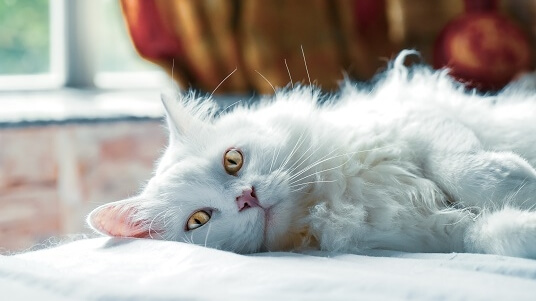
Having a sick cat at home requires special attention, especially when there’s a need for isolation.
This guide will walk you through why isolation is essential and provide you with tools to make the process smoother for both you and your feline friend.
Isolating a sick cat is crucial for various reasons.
Beyond providing an environment conducive to recovery, isolation is essential in preventing the spread of diseases, reducing stress on the cat, and minimizing exposure to other household pets or external threats.
By providing a safe and comfortable environment for your sick feline, you are ensuring a faster recovery process and protecting the overall health and well-being of your household.
Your sick cat might carry a condition that, while benign to them, poses risks to other household pets.
Some feline illnesses are zoonotic, meaning they can be transmitted to humans.
For instance, diseases like toxoplasmosis, while rare, can be harmful to pregnant women.
Other infections, like the feline leukemia virus (FeLV) and feline immunodeficiency virus (FIV), are potentially fatal to other cats.
By understanding the diseases’ impacts, you realize the significance of effective isolation.
Each tool has been designed with your feline’s comfort and safety in mind, ensuring that the isolation period is as stress-free as possible.
Ideal for temporary isolation, this lightweight cage offers ventilation, ensuring your sick cat is calm during vet visits or short trips. Most come with soft bedding and are easy to clean, ensuring maximum comfort.
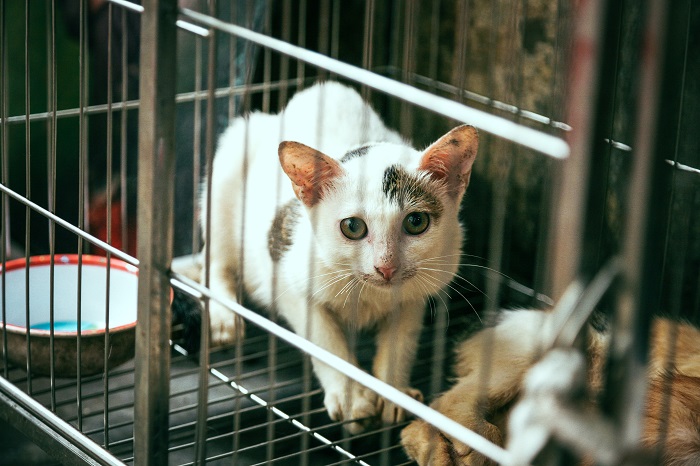
Think of this as a mini-hospital ward for your cat.
This dedicated space should be quiet, away from household traffic, and have all the necessities.
Regular cleaning and disinfection are crucial to prevent reinfections.
For homes with larger open spaces or gardens, these fences are invaluable. They can be adjusted to fit various spaces, ensuring your sick cat remains confined but still has enough room to move around.
These collars are a boon for cats prone to licking or scratching their wounds. They are designed to be comfortable, preventing further injury and ensuring topical medications stay on.
Often made of easy-to-clean materials, these houses give your sick cat the privacy they need. It’s their personal space, a sanctuary during their recovery period.
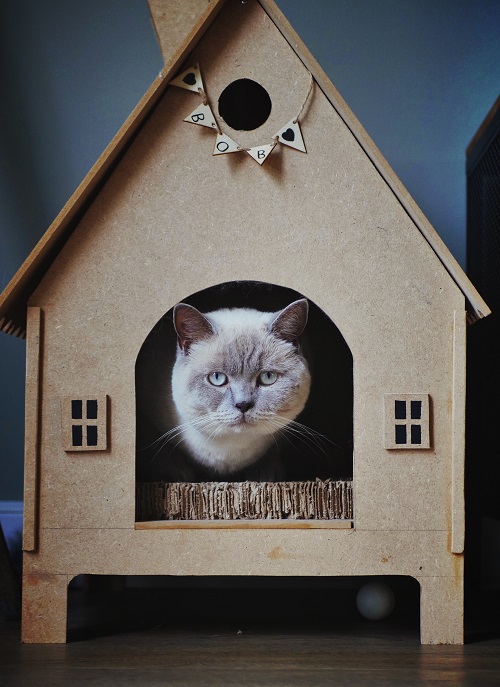
Diseases can spread through feces, making it essential to have a separate litter box. Ensure it’s cleaned regularly, and consider using disposable liners for added hygiene.
Toys can be a source of comfort for a sick cat. Opt for toys that are easily sanitized. Beddings should be washed frequently, ensuring any pathogens are eliminated.
This modern tool is for those moments when you can’t be physically present. Monitor your cat’s behavior, eating habits, and overall condition, ensuring they’re comfortable and safe.
These tents are more than just an isolation tool. They replicate the confined, safe spaces cats love. Whether indoors or outdoors, a cat tent provides a haven for your recovering feline.
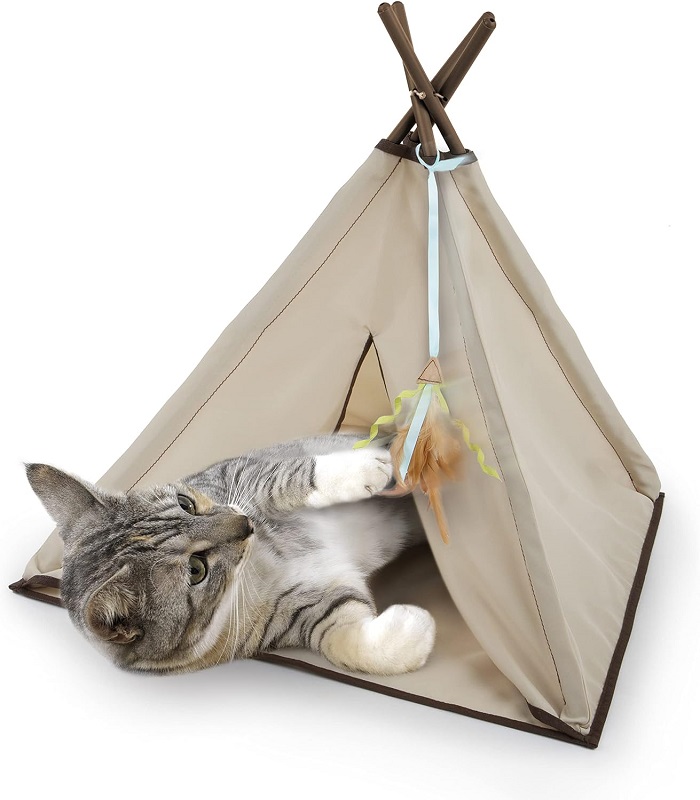
Why is a cat tent so suitable for our ailing feline friends? Let’s delve deeper into the myriad benefits and reasons behind this.
Firstly, it’s essential to understand that cats, whether domesticated or wild, have always shown a natural inclination towards confined spaces.
This behavior can be traced back to their wild ancestors.
In the wilderness, confined spaces, like burrows or thickets, offered protection from predators and the elements.
These spaces became safe havens where they could rest, recover, or care for their young without fear of disturbances.
Applying this knowledge to our domestic felines, it’s not surprising to see them often seeking out the smallest boxes, laundry baskets, or even the spaces underneath our furniture.
These areas offer a sense of security, a world away from potential stressors.
For a sick cat, this affinity becomes even more pronounced.
When unwell, a cat will instinctively seek out places where they can be shielded from external stimuli. A cat tent effectively replicates this safe haven within the confines of our homes.
A cat tent isn’t just any confined space. It’s specifically designed with the feline’s comfort and safety in mind. Here’s what sets it apart:
Every pet owner knows that a sick cat is more sensitive to its environment.
The smallest changes can become overwhelming: the other pets’ playful antics, children running around, or even the unfamiliar scent of a new household item.
The cat tent acts as a protective barrier between the ailing feline and these potential stressors.
Inside this sanctuary, the sick cat can focus solely on its recovery without the added burden of navigating a constantly changing environment.
Another significant advantage of an enchanting cat tent is its portability.
If you need to move your sick cat to a quieter part of the house, or even outdoors for some fresh air, the tent can easily be transported. This flexibility ensures that your cat always has its safe space, no matter where it is.
Dealing with a sick cat can be heart-wrenching, but with the right tools, their recovery journey becomes more manageable.
The tools outlined above not only make the isolation process effective but also ensure your feline friend’s comfort.
Remember, patience, love, and the right environment are key to a successful recovery. Your efforts will be rewarded with the return of a healthy, happy feline companion.


Traveling with a cat might sound daunting, but it can be an enriching experience that deepens the bond between you and your feline companion. To
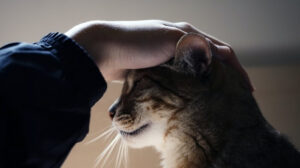
The bond of cat-owner love is unique, irreplaceable, and full of mysteries. This article provides a guide to deepening this connection, ensuring that every purr

We’re glad you’re here to read this article on our site. You’re in for a treat whether you own a cat or are just captivated
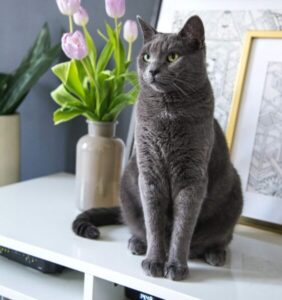
Cats possess an innate sense of curiosity and a natural desire for exploration, but not all of our feline companions can freely roam the great

Having a sick cat at home requires special attention, especially when there’s a need for isolation. This guide will walk you through why isolation is
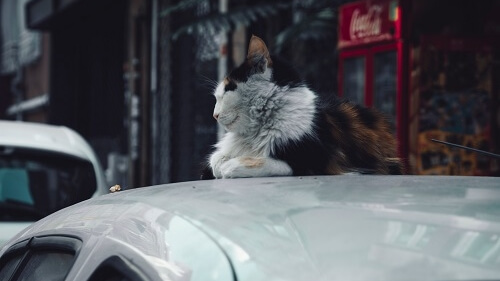
Traveling with a cat might sound daunting, but it can be an enriching experience that deepens the bond between you and your feline companion. To
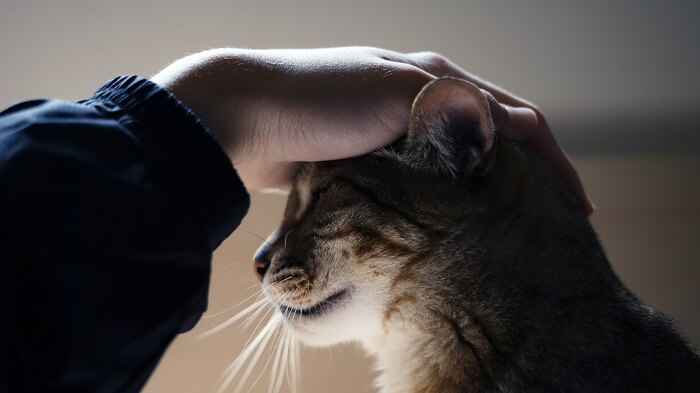
The bond of cat-owner love is unique, irreplaceable, and full of mysteries. This article provides a guide to deepening this connection, ensuring that every purr

We’re glad you’re here to read this article on our site. You’re in for a treat whether you own a cat or are just captivated
Copyright © 2024 incattent. All Rights Reserved.